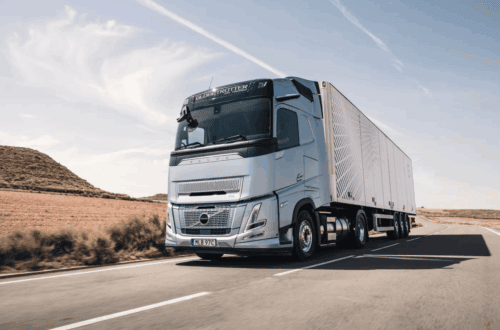New U.S. Tariffs on Heavy Trucks and Pharmaceuticals Test Global Supply Chains

The latest U.S. tariff package targets imported heavy trucks and branded drugs, creating new challenges—and potential opportunities—for manufacturers, fleets, and global supply chains.
By Amy Roach | September 26, 2025
The Trump administration’s latest tariff package is poised to reverberate through two very different corners of the logistics world: heavy trucks and pharmaceuticals. The White House announced a 25% tariff on all imported heavy-duty trucks and a 100% tariff on branded and patented drugs, alongside measures targeting furniture and cabinetry. The new tariffs will go into effect on October 1, 2025.
Heavy Trucks: Domestic Support vs. Supply Chain Costs
Officials say the truck tariffs are designed to strengthen U.S. manufacturers such as Peterbilt, Kenworth, and Freightliner, arguing that outside competition has placed strain on domestic producers. Advocates note the move could provide a lift to U.S.-based production and encourage investment in homegrown manufacturing capacity.
At the same time, Mexico—the largest exporter of medium- and heavy-duty trucks to the U.S.—plays a critical role in the sector. The country’s exports of larger vehicles have tripled since 2019, with many models containing roughly 50% U.S. content, including diesel engines. New investments, such as Volvo’s planned $700 million factory in Monterrey, highlight the interconnected nature of North American truck production.

The new round of tariffs will complicate supply chains for truck manufacturers like Volvo, which is constructing a $700-million facility in Monterrey, Mexico.
Aftermarket parts may also feel the effects. The United States imported nearly $128 billion in heavy vehicle components from Mexico last year, accounting for more than a quarter of total imports.
Industry observers say the impact on carriers will depend on how quickly domestic production scales and whether costs for equipment and parts rise. Fleets could face higher vehicle acquisition expenses in the short term, but supporters argue tariffs could bolster the long-term health of U.S. truck makers and safeguard national security interests.
Pharma: A Stress Test for Global Supply Chains
The proposed 100% tariffs on branded and patented drugs could introduce new complexities for European pharmaceutical firms exporting to the U.S. Simon Geale, Executive Vice President at Proxima, calls the measure “a geopolitical stress test for how globally integrated the pharmaceutical industry can remain.”
Geale notes that companies will weigh multiple strategies—absorbing costs, shifting production closer to the U.S., rethinking pricing, or in some cases stockpiling products where shelf life allows. For logistics providers, this could translate into a near-term uptick in warehousing and expedited shipments, while over the long term, the tariffs may accelerate investment in U.S.-based production facilities.

The pharmaceutical supply chain may also feel the impact of the Trump Administration’s latest tariff package.
What It Means for Logistics Leaders
The tariff package illustrates how quickly trade policy can alter supply chain dynamics. For trucking, the outcome may hinge on whether tariffs foster a stronger domestic industry without significantly raising costs for fleets. In pharmaceuticals, the challenge lies in adapting global networks to new cost realities while ensuring reliable delivery of essential medicines.
For logistics leaders, the key will be balancing risk and opportunity—planning for short-term disruption while positioning for potential long-term shifts in sourcing, production, and distribution.
